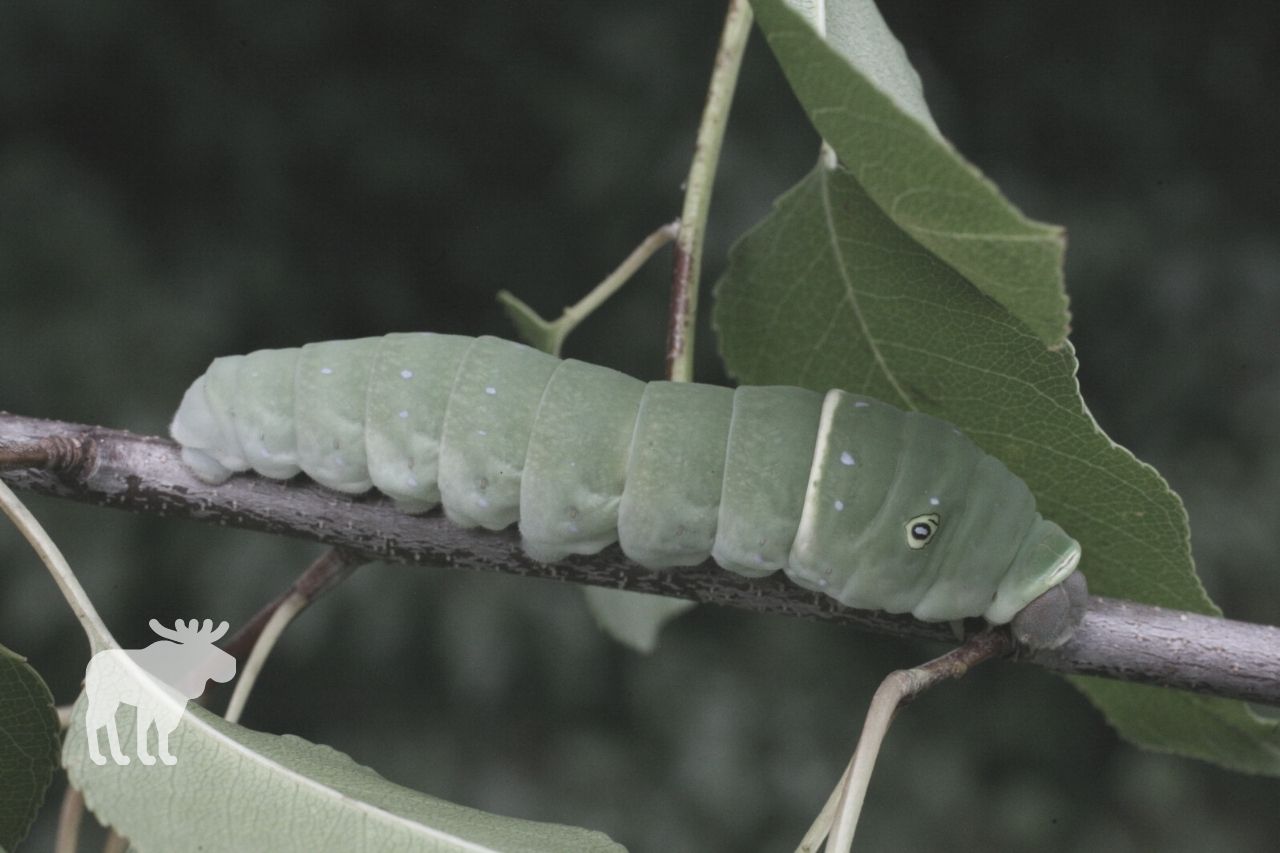You probably know that most butterflies eat nectar from flowers; but have you ever asked yourself, what do tiger swallowtails eat? What are their favorite kinds of flowers? Are there any flowers they don’t like? What plants do their caterpillars eat? Keep reading! In this article, we’ll answer all of these questions.
What You'll Learn Today
What Do Tiger Swallowtail Caterpillars Eat?

Tiger swallowtail caterpillars eat the leaves of whatever plant their egg was laid on. Foods of choice usually include woody plants, especially trees and shrubs in the rose, magnolia, and poplar families.
Unlike some butterflies, tiger swallowtails lay eggs on multiple plants, and the ones they choose are somewhat dependent on the butterfly species and what’s available in the region.
Let’s take a closer look at each species of tiger swallowtail and some of the common foods they eat as caterpillars.
Eastern Tiger Swallowtail
This most common type of tiger swallowtail is known for eating the distinctively-shaped leaves of the tulip tree, but they may also chow down on sweet bay magnolia, wild cherry, and even rose plants.
Western Tiger Swallowtail
This swallowtail is perhaps one of the least picky when it comes to choosing host plants for its young. Western tiger caterpillars will eat the leaves of many plants, such as aspens, cottonwoods, willows, poplars, and alders–whatever happens to be available in a given area.
Canadian Tiger Swallowtail
The Canadian tiger swallowtail can be found widely throughout Canada and also parts of the U.S., such as Wisconsin and Alaska. The caterpillars eat the leaves of various trees such as black cherry, birch, and aspen.
Appalachian Tiger Swallowtail
This type of tiger swallowtail likely eats from a variety of host plants in its native deciduous forests, but the only host plant known for sure is the wild black cherry tree. Appalachian tiger swallowtails have been observed eating the leaves of this tree in captivity.
What Flowers Do Tiger Swallowtails Like?

Tiger swallowtails will nectar from a variety of flowers depending on what is available to them in a given location and season. Whereas caterpillars will typically only eat the plant they hatched out on, adult butterflies enjoy nectar from many different kinds of flowers.
Some of the flowers they enjoy nectaring from include:
- Rose: Appalachian tiger swallowtails are known for nectaring on plants in the rose family, and other tiger species will also nectar on them as well from time to time. Eastern tigers, as mentioned, will sometimes lay eggs on rose plants, so having the flowers to nectar on as well act as a double attractant to the butterflies.
- Lilac: The bright colors and sweet smells of lilacs make them a favorite choice of eastern swallowtails, as well as other tiger species who can find them. These flowers grow throughout much of the eastern swallowtail’s range.
- Wild cherry: Wild cherries are found throughout the eastern parts of the U.S., and they are used both as host plants and nectar flowers by all but the western tiger swallowtails. These trees produce exceptionally fragrant blossoms in the spring, when the overwintering butterflies will be emerging from their chrysalises.
- Azalea: Azaleas are another favorite of the Appalachian tiger, though other tiger swallowtails enjoy them as well. These silky flowers come in a variety of bright colors and bloom during the spring.
- Honeysuckle: Honeysuckle flowers provide a tasty food choice during the spring and summer months. The fragrant blossoms fill the air with sweetness and attract many kinds of pollinators along with tiger swallowtails.
- Milkweed: Known for being the plant of choice for monarch butterflies, milkweed flowers are also a favorite of the eastern tiger swallowtail. There are many different varieties of milkweed, all of which produce small but highly attractive nectar flowers.
- Zinnias: Zinnias are brightly-colored annual flowers that often make an appearance in flower gardens. Though they don’t have a particularly strong fragrance, they are popular with many different kinds of butterflies, including tiger swallowtails.
- Thistles: Western swallowtails enjoy nectaring from thistle flowers, as well as other native plants that grow in their range like cactus flowers and yucca.
What Flowers Do Tiger Swallowtails Not Like?

Tiger swallowtails are not finicky when it comes to the flowers they feed on. They are not known for avoiding or disliking any particular varieties of flowers.
That said, certain flowers are more likely to attract them than others. If you’re hoping to draw swallowtails to your yard, planting large, colorful, fragrant flowers is your best bet.
Tiger swallowtails, especially the males, also enjoy gathering at muddy puddles and the edges of ponds to drink the water, which is full of minerals. This behavior is known as puddling, and you can see a great example of it in the video here.
Sometimes, they will even feed on the sugar-water solutions in hummingbird feeders.
So, as you can see, tiger swallowtails enjoy many foods and will rarely turn down a meal. There are no known flowers that will repel them.
Conclusion
Tiger swallowtails eat different foods depending on where they live and the species they belong to. They will nectar from nearly any colorful, fragrant flower, and their caterpillars eat the leaves of many trees, such as tulip trees, poplars, wild cherry, aspen, willow, and cottonwood.
Do the tiger swallow tails like fruit? Bananas, oranges…?